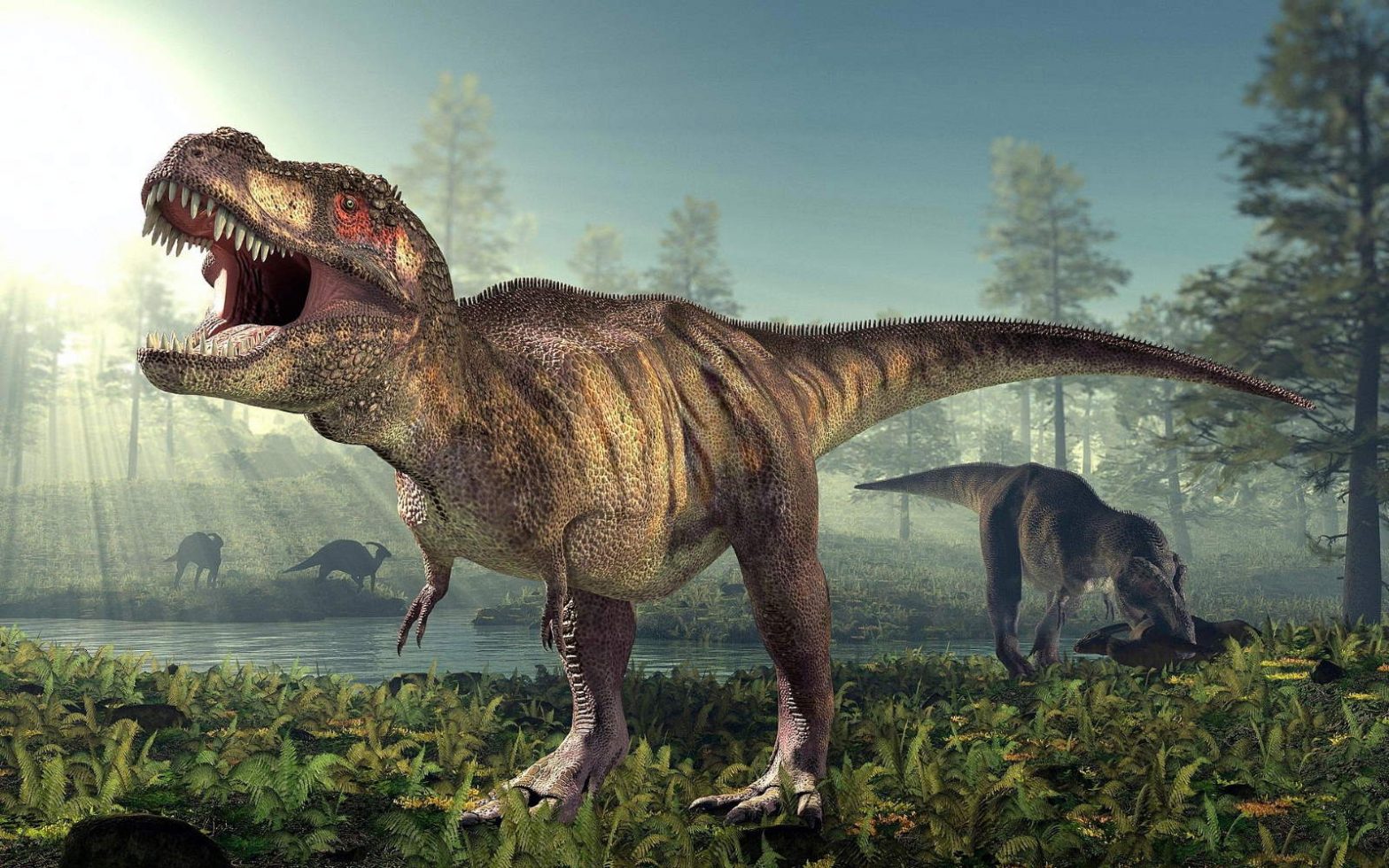Dinosaurs were a very unique group of reptiles that existed as early as 243 million years ago. This extinct group had incredible diversity and roamed the earth for over 165 million years. As the earth itself went through drastic changes, dinosaurs changed too. From the skies to the seas, these prehistoric reptiles adapted and were able to live in many different environments.
From 3 different extinctions, the rise of the first dinosaurs, to the origins of the T. rex, if you are curious about the story of the dinosaurs, keep reading…
History of Dinosaurs
The first reptiles actually appeared over 67 million years before the dinosaurs, during the carboniferous period almost 310 million years ago. These small reptiles belonged to the Class Archosauria (see notes 1), which means the “ruling lizards” and includes dinosaurs, birds, and crocodiles. Though these reptiles crawled the earth for millions of years it wouldn’t be until just after the end of the Permian period that they would begin to diversify into dinosaurs.
The Permian-Triassic extinction happened over 252 million years ago and was the largest extinction event in history that killed over 90% of the species on earth. Right after this mass extinction is when small reptiles, called dinosauromorphs, began to evolve into dinosaurs.
The earliest known dinosaur
251 million years ago is the official start of the Triassic period and the beginning of the Mesozoic era. The continents we know today looked a little different at this point. The land was made up of one supercontinent called Pangea with a single ocean called Panthalassa.
The first dinosaur, named Nyasasaurus parringtoni, was relatively small and appeared around 242 million years ago.
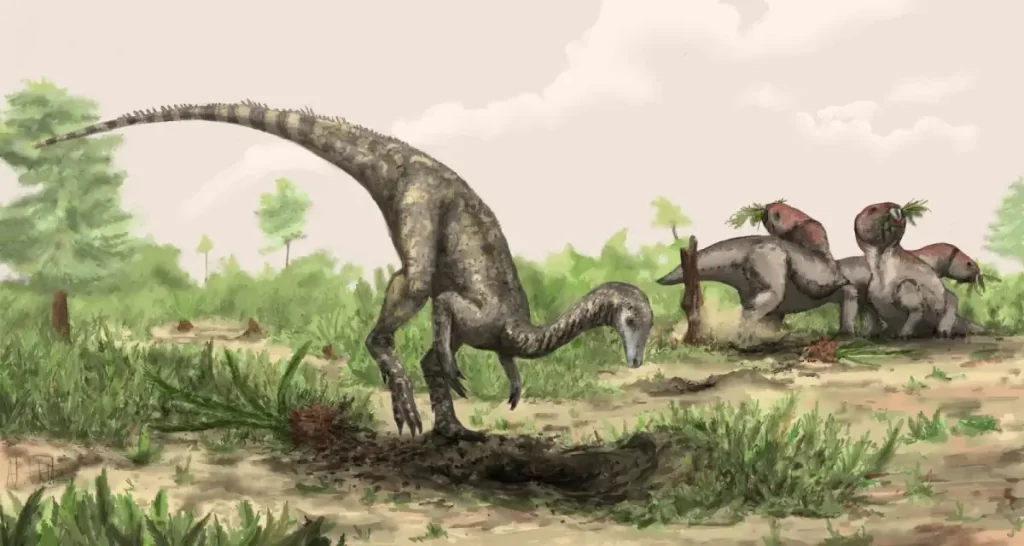
Around 230 million years ago we began to see larger species of dinosaurs such as the Plateosaurus which was a herbivore that walked on four legs and was 9 meters long. With the exception of the Plateosaurus, dinosaurs were relatively small during the Triassic period.
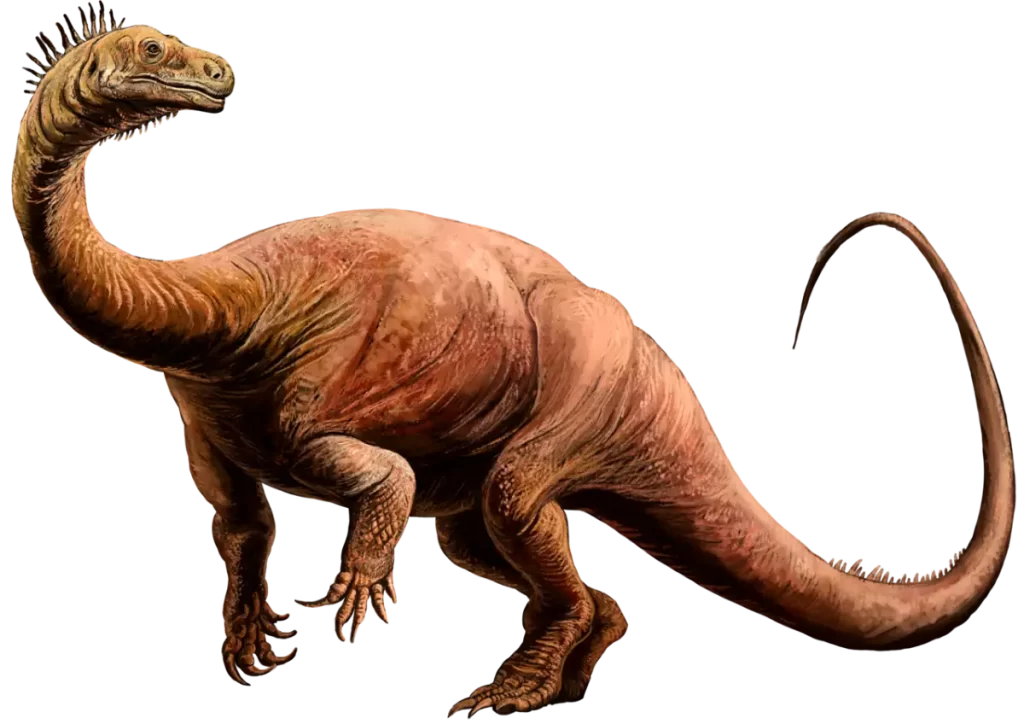
Jurassic period: the most well-known ages of dinosaurs
The Triassic/Jurassic extinction happened 201 million years ago and was not nearly as massive as the Permian-Triassic extinction. Still, large amphibians, marine reptiles, and some dinosaurs went extinct. This marked the beginning of the most well-known ages of dinosaurs. In the Jurassic period, Pangea was breaking apart into two supercontinents called Laurasia and Gondwanaland.
It was around this point 200 million years ago that the first flying dinosaurs appeared. The genus of Pterosaurs were some of the first dinosaurs to take to the sky. Eudimorphodon is the earliest known Pterodon and was only 3.3 feet long. Marine reptiles like the Ichthyosaurs began taking over the seas and on land lush, green plants began to spread.
The Jurassic period is when massive dinosaurs really began to flourish. Apatosaurus and Diplodocus were two long-necked herbivorous sauropods that weighed up to 11 tons and reached 26 meters (85 feet) long.
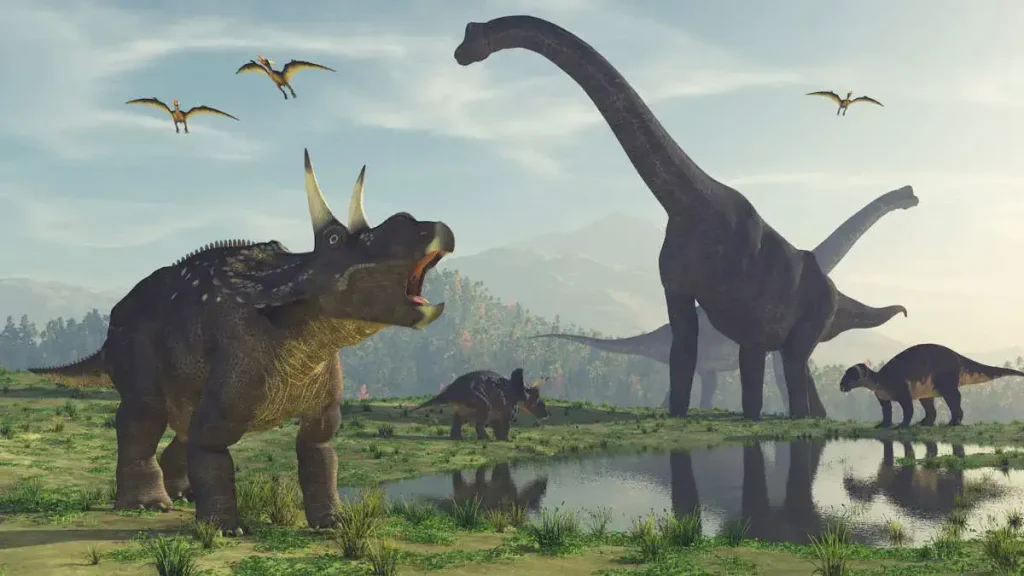
Related: Largest Dinosaurs Ever Lived
Late Jurassic
The late Jurassic around 150 million years ago saw the first armored dinosaurs like the Stegosaurus. Archaeopteryx also lived around this time period and is considered one of the first feathered dinosaurs that bridged the gap between birds and dinosaurs. In the ocean, the large fish-like Ichthyosaurs populations began to decline and Pliosaurs like the Liopleurodon replaced them.
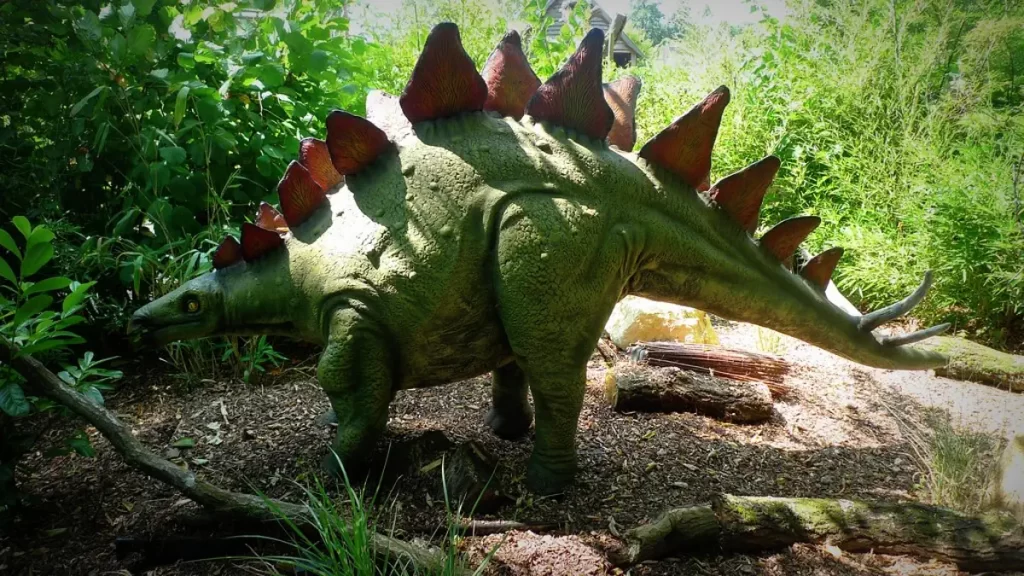
Cretaceous period: the “real” age of dinosaurs
Thanks to the movie franchise Jurassic Park, the Jurassic period is probably the most famous. However, the Cretaceous period was truly the age of dinosaurs. The Cretaceous period was also the longest period of the Mesozoic era. It began 145 million years ago and with it came an explosion of dinosaur diversity.
Laurasia and Gondwanaland continued to break up and the continents began to look a little more like what they do today. There was a huge explosion of flowering plants, hot temperatures, rising sea levels, and the creation of swamps during this period. At this point, there were raptors, armored dinosaurs, gigantic herbivores, and voracious carnivores.
The late cretaceous, around 125 million years ago, had some of the biggest and scariest dinosaurs to ever live. The titanosaurs existed during this time and species like the Argentinosaurus weighed up to 77 tons.
Tyrannosaurus rex was another inhabitant of the late cretaceous and was considered an apex predator that was 40 feet long and had the most powerful jaws of any land animal.
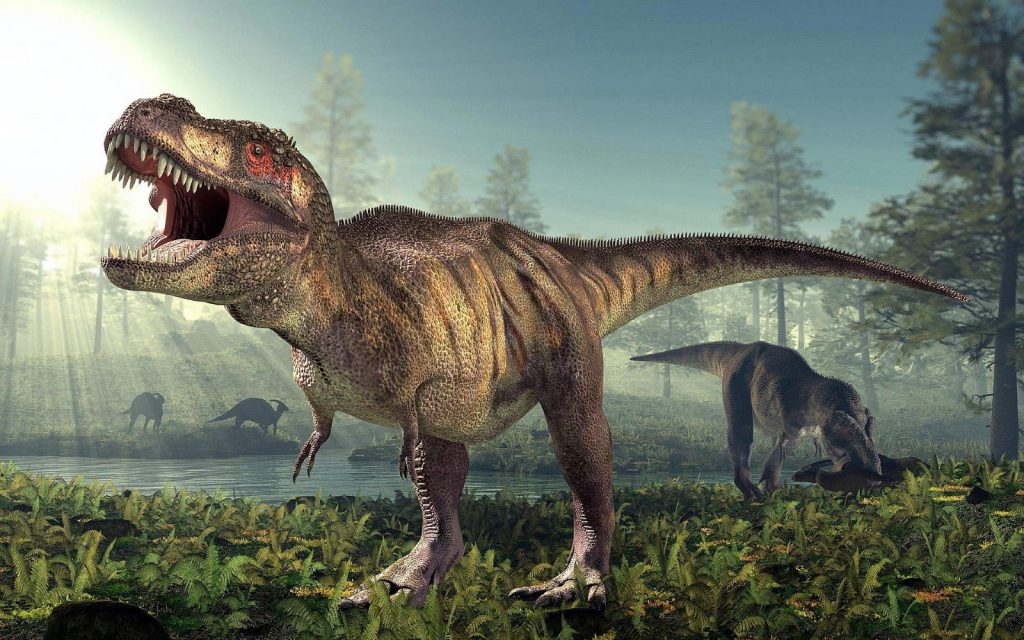
Triceratops and Ornithomimids, also known as bird-mimics, also roamed the land at this time. The Ornithomimids looked like ostriches and were the world’s fastest dinosaurs running at 50 mph (80 km/h).
The largest flying dinosaur, the Quetzalcoatlus, lived in the late cretaceous period and had a wingspan of 10-11 meters (33-36 feet). In the oceans, the Ichthyosaurs had disappeared and mosasaurs and pliosaurs fully replaced them.
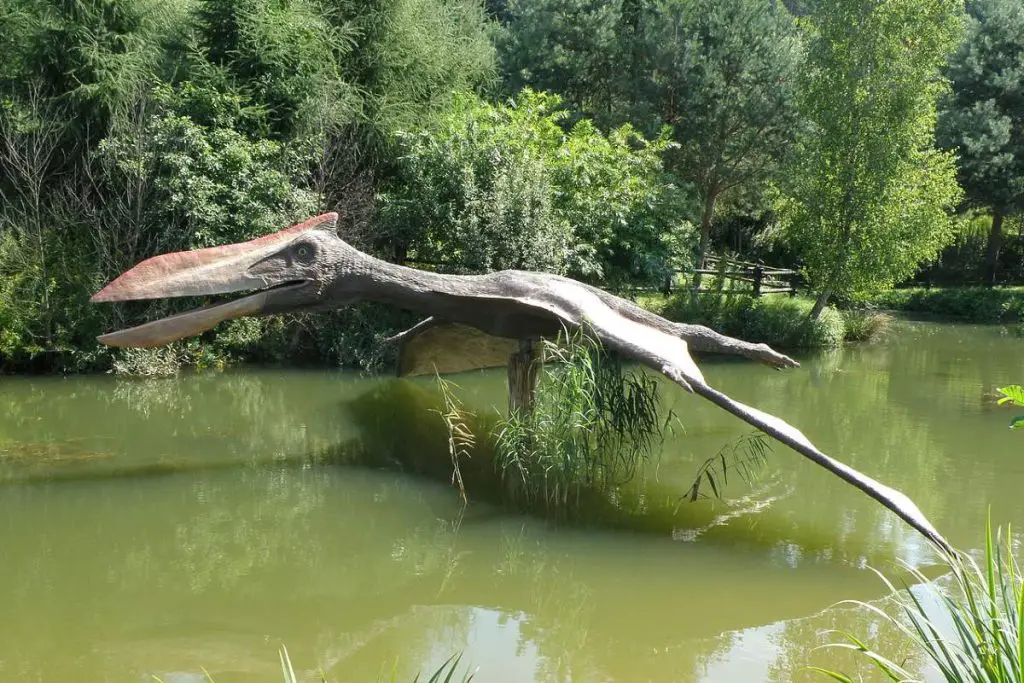
Toward the end of the Cretaceous around 76 million years ago, dinosaurs began declining. Some scientists believe that their large sizes were simply not sustainable. The Cretaceous-Tertiary extinction around 66 million years ago marked the end of the Mesozoic Era and the end of the dinosaurs.
The extinction was brought about by a massive meteor impact, climate change, and supervolcano activity. The last dinosaur was thought to be a small two-legged dinosaur named Chenanisaurus barbaricu.
Though you may never get to see a living dinosaur, the next best thing may be to live closer than you think. Birds are considered by some to be modern dinosaurs!
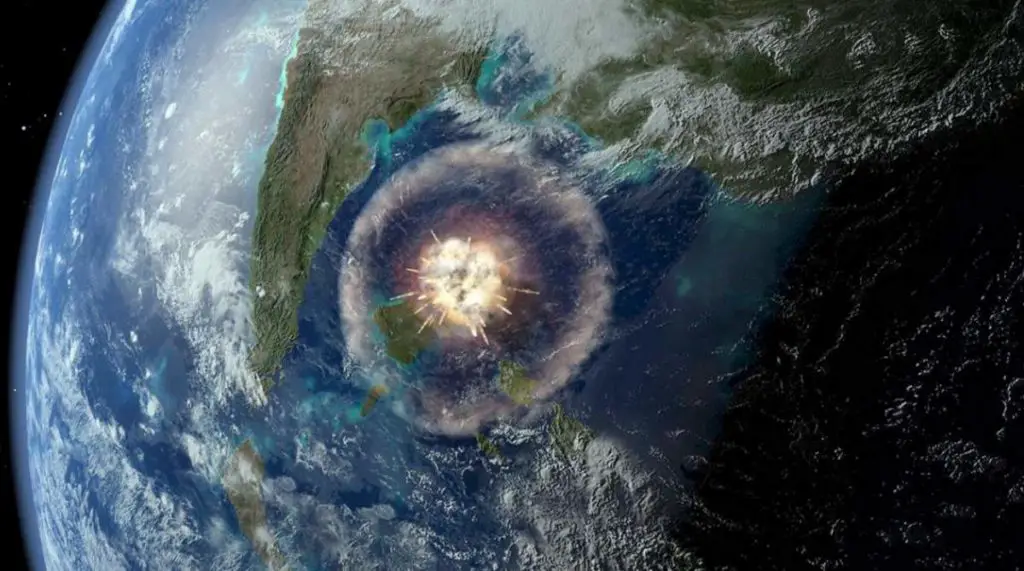
Conclusion
The history of dinosaurs is long and complicated. It involves multiple extinction events, three different time periods, and the rise and fall of an entire era. Though complex, the story of the dinosaurs has fascinated people for generations and what we know will only continue to change. Every day scientists make new discoveries that further our understanding of how dinosaurs lived and died.
As we make new discoveries about these mysterious reptiles, we only find more and more reasons to believe they were some of the most amazing creatures that ever existed.
Notes
- Archosauria ( literally means”ruling reptiles”) is a clade of diapsids, with birds and crocodilians as the only living representatives.
- How Many Elephants are Left in the World in 2025? - August 17, 2025
- Moon Landings: All-Time List [1966-2025] - February 2, 2025
- What Is Max-Q and Why Is It Important During Rocket Launches? - January 16, 2025
